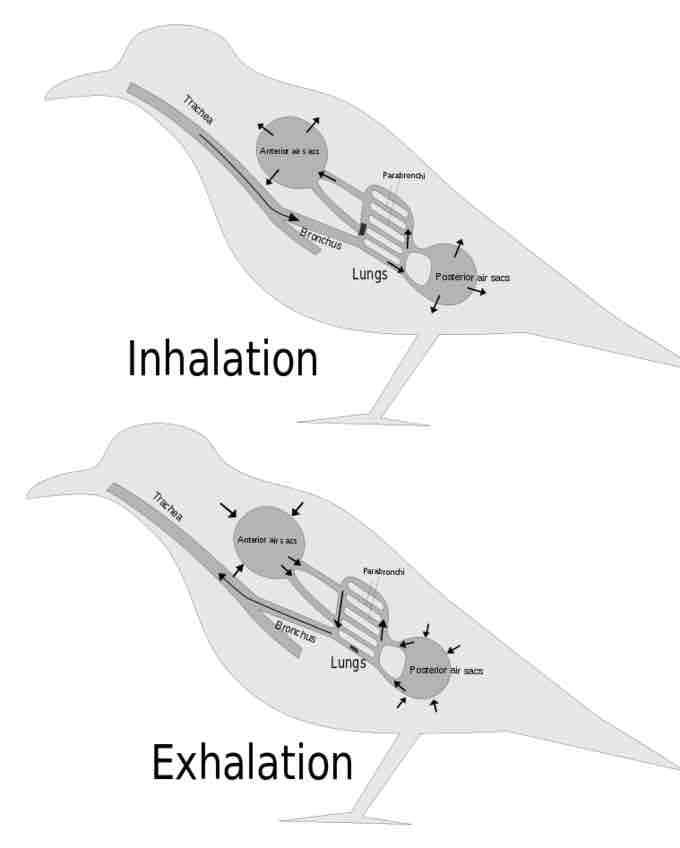Amphibian Respiration
Amphibians have evolved multiple ways of breathing. Young amphibians, like tadpoles, use gills to breathe, and they do not leave the water. As the tadpole grows, the gills disappear and lungs grow (though some amphibians retain gills for life). These lungs are primitive and are not as evolved as mammalian lungs. Adult amphibians are lacking or have a reduced diaphragm, so breathing through the lungs is forced. The other means of breathing for amphibians is diffusion across the skin. To aid this diffusion, amphibian skin must remain moist. It has vascular tissues to make this gaseous exchange possible. This moist skin interface can be a detriment on land, but works well under water.
Avian Respiration
Birds are different from other vertebrates, with birds having relatively small lungs and nine air sacs that play an important role in respiration. The lungs of birds also do not have the capacity to inflate as birds lack a diaphragm and a pleural cavity. Gas exchange in birds occurs between air capillaries and blood capillaries, rather than in alveoli.
Flight poses a unique challenge with respect to breathing. Flying consumes a great amount of energy; therefore, birds require a lot of oxygen to aid their metabolic processes. Birds have evolved a respiratory system that supplies them with the oxygen needed to sustain flight. Similar to mammals, birds have lungs, which are organs specialized for gas exchange. Oxygenated air, taken in during inhalation, diffuses across the surface of the lungs into the bloodstream, and carbon dioxide diffuses from the blood into the lungs, and is then expelled during exhalation. The details of breathing between birds and mammals differ substantially.

Bird Respiration
The process of inhalation and exhalation in birds. Three distinct sets of organs perform respiration — the anterior air sacs, the lungs, and the posterior air sacs.
In addition to lungs, birds have air sacs inside their body. Air flows in one direction from the posterior air sacs to the lungs and out of the anterior air sacs. The flow of air is in the opposite direction from blood flow, and gas exchange takes place much more efficiently. This type of breathing enables birds to obtain the requisite oxygen, even at higher altitudes where the oxygen concentration is low. This directionality of airflow requires two cycles of air intake and exhalation to completely get the air out of the lungs.